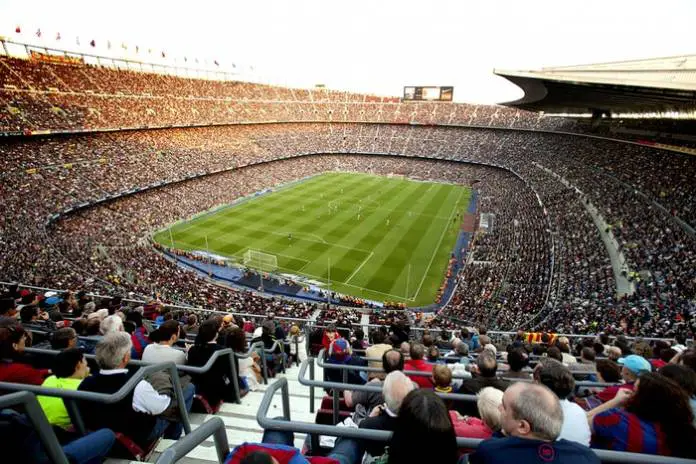
Football stadiums have changed dramatically in the last couple of decades. Modern bowl arenas, with their reinforced steel and glassy sheens, have replaced the rusty old corrugated roofs and wooden seats of years gone by.
The Premier League is home to a wide variety of stadiums, from the old to the new. Having a quality, atmospheric ground can help a team achieve success, and home advantage counts when it comes to Premiership betting odds. Here, we count down the top five stadiums the league has to offer (in our opinion!).
St James’ Park (Newcastle United)
Rising out of the very center of Newcastle is St. James’ Park, a stadium very much in the heart of the city – spiritually as well as geographically. Newcastle United’s home has seen some great games and great players, from Jackie Milburn firing in goals at the old uncovered Gallowgate End, to Alan Shearer blasting rip-roaring volleys into the net after the stadium’s redevelopment in 1998.
Although Newcastle’s fortunes have undulated somewhat over the last 10 years or so, the atmosphere at St James’ Park is consistently electric. Whether it’s matches against England’s top clubs like Manchester United and Liverpool, or the local Tyne-Wear Derby against Sunderland, St James’ Park is a special place to both play and watch football.
Goodison Park (Everton)
Perhaps a controversial choice for the top-five list, but Goodison Park embodies all the traditional characteristics of an old-fashioned English football stadium. From the ground’s location, tucked in amid rows of terraced working-class homes, to the classic, slanted roof of the Main Stand, Goodison Park encapsulates everything good and proper about British grounds.
Of course, Everton’s days at Goodison are numbered after the club has been given the all-clear to pursue the construction of a brand-new, state-of-the-art stadium in the Bramley Dock area of Liverpool. The fact that these are the final few years we’ll be able to watch football in Everton’s old home creates a special aura at Goodison, and Toffees fans will want to soak up every last ounce of enjoyment before they depart.
Old Trafford (Manchester United)
The biggest stadium in the league, Old Trafford became a fortress in the Sir Alex Ferguson years. Teams cowered in fear under the suffocating weight of the Old Trafford atmosphere and the blistering football Ferguson’s sides purveyed. The ground’s vastness is striking, with the large ‘MANCHESTER UNITED’ emblazoned across the exterior visible from many different vantage points in that part of the city.
Although the current team has lost some of the perceived invincibility that Ferguson instilled around the club, Old Trafford remains a special place. Ask any Non-League side which FA Cup draw they’d like, and the answer will often be Manchester United away. That’s the power of one of England’s biggest and most successful football clubs, and their Theatre of Dreams.
Anfield (Liverpool)
Anfield’s atmosphere is unrivaled throughout the Premier League. Few stadiums offer the same intrinsic emotional bond between players, supporters and stadium alike as Anfield. The ground feels alive on the big occasions, whether it’s a high-stakes Premier League match or one of those special European matches under the lights.
The expansion of Anfield in 2016 has only increased the stadium’s noise and allure. The attacking brand of football employed by manager Jürgen Klopp, along with the fatherly relationship he enjoys with both players and fans, means he is the perfect maestro for this footballing amphitheater.
Tottenham Hotspur Stadium (Tottenham Hotspur)
A £1 billion, 62,000-capacity behemoth — the Tottenham Hotspur Stadium is modern football fantasy incarnate. From the breathtaking single-tier South Stand, which rises and rises like an unreachable mountain summit, to the other three sides which sweep around and enclose this model theatre of footballing superstardom, this is a stadium which now stands alone as the top ground in England.
White Hart Lane was a compact, atmospheric ground, but all the investment Spurs put into their new home, and the never-ending delays that shrouded its development, now appear to be worth it. Supporters have taken to the stadium like proverbial ducks to water, and the fact that the ground’s capacity just exceeds that of Arsenal’s Emirates Stadium makes it all the sweeter. After all the waiting, Spurs fans have a ground they can be very proud of.











